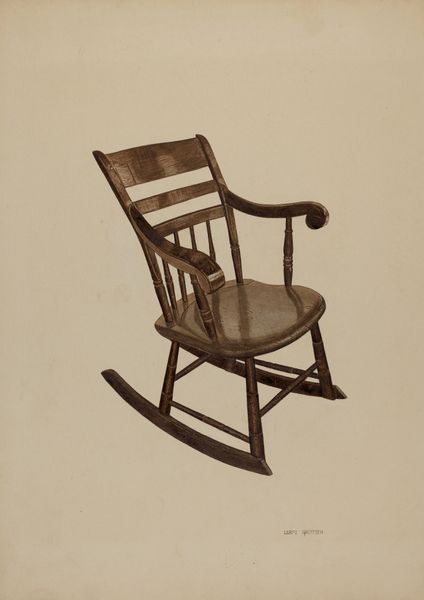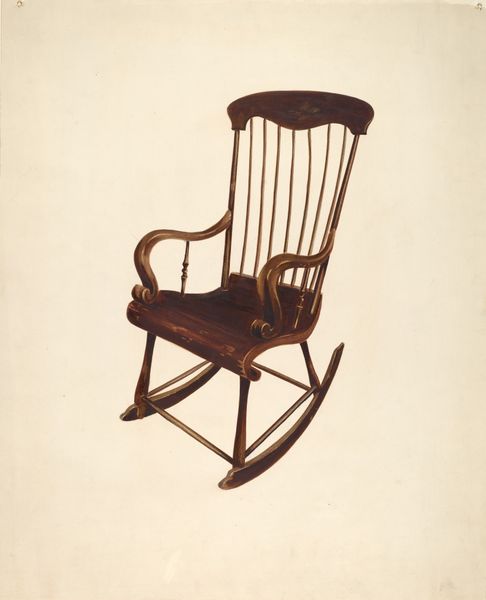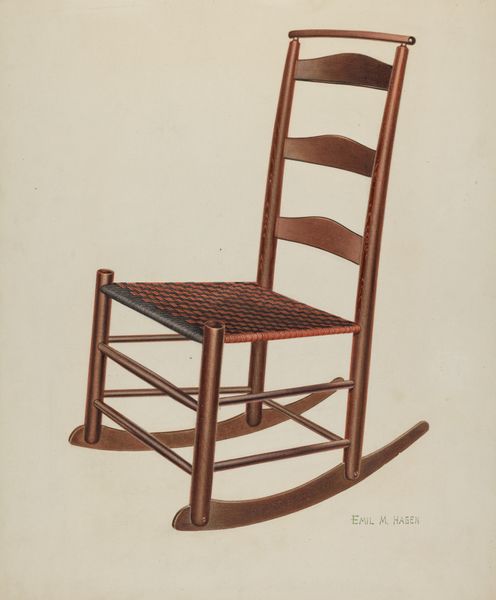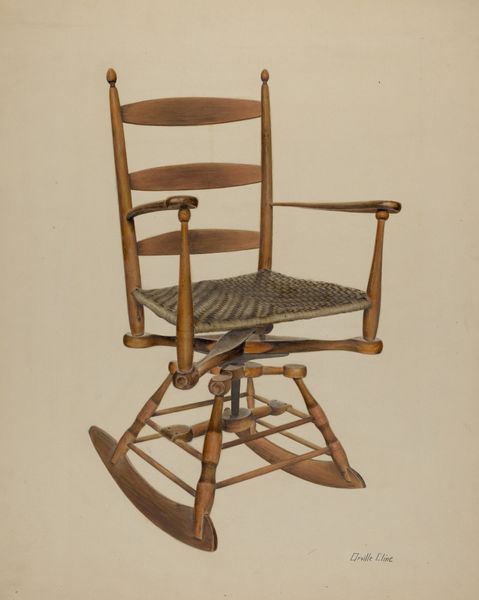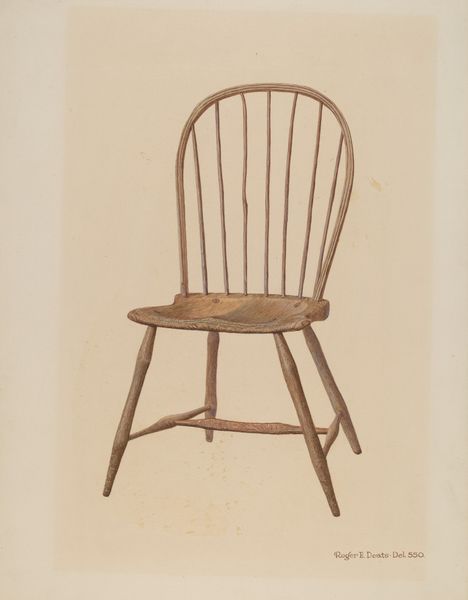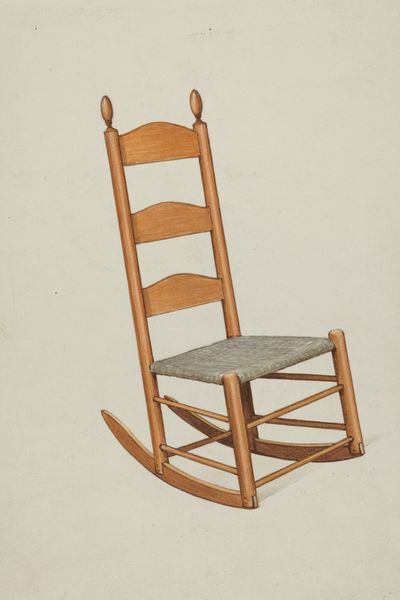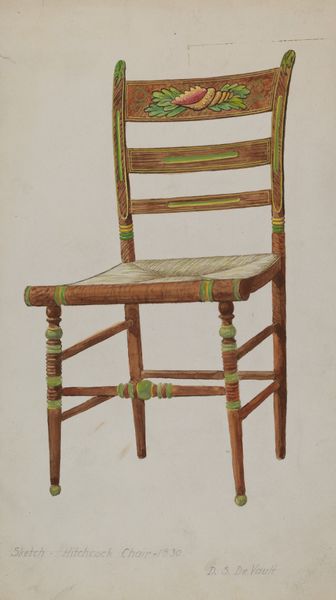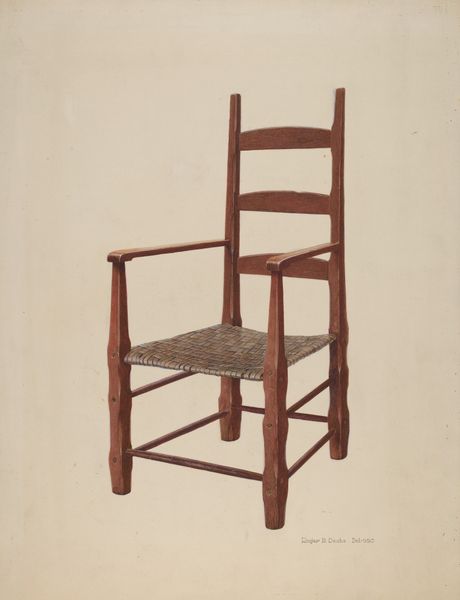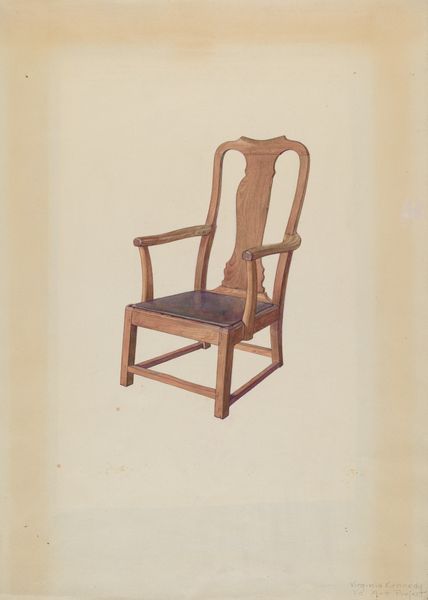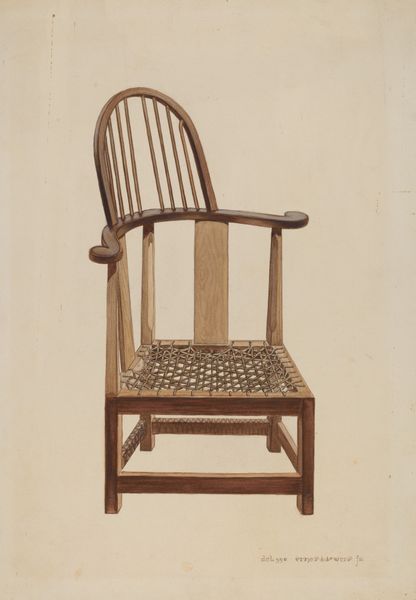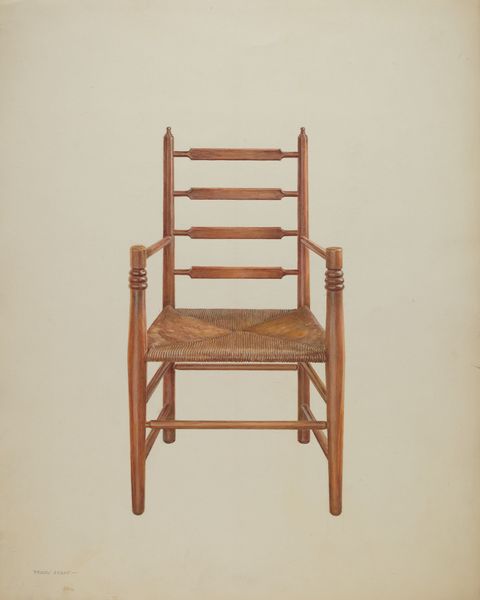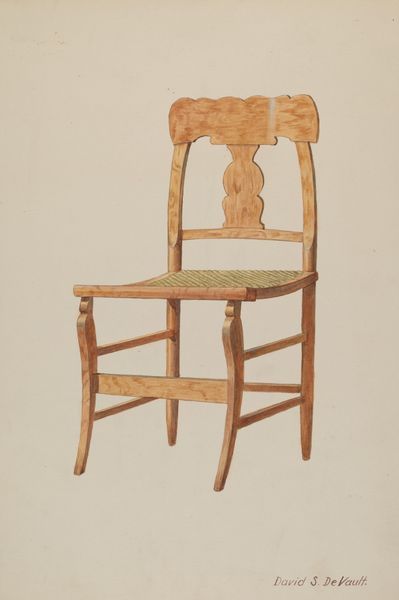
drawing, painting, watercolor
#
drawing
#
painting
#
charcoal drawing
#
watercolor
#
watercolour illustration
#
watercolor
#
realism
Dimensions: overall: 41.2 x 30.3 cm (16 1/4 x 11 15/16 in.) Original IAD Object: 21 1/2"high; 12 1/2"square
Copyright: National Gallery of Art: CC0 1.0
Curator: Herman Stroh's watercolor and charcoal drawing, "Child's Rocking Chair," from around 1942, presents a simple, everyday object with compelling attention. Editor: It feels incredibly lonely. There’s a certain starkness in its realism. The empty chair really brings forward questions around absence, particularly during a period overshadowed by World War II, maybe representing children separated from their families. Curator: Indeed. Stroh was deeply invested in representing quotidian scenes as powerful symbols within a complex, war-torn social context. This particular image becomes incredibly potent when thinking about the impact of social politics in the everyday, domestic lives. Editor: It's interesting how a simple object is re-contextualized. You notice the artist's commitment to accurately portray the construction of the chair, from the woven seat to the curved rockers. The shadows also carry weight—it's not simply documentation but, as you mentioned, commentary. Curator: Definitely. The choice of representing a child's rocking chair places it under consideration of questions surrounding social responsibility to future generations and the anxiety felt around the topic at this historical juncture. Editor: I do feel a push and pull, wanting to approach the subject from different intersectional angles. The object’s very existence highlights an era, as well as, social structure. The material reality makes it feel, in a way, timeless. Curator: Absolutely. By capturing this "Child's Rocking Chair," Stroh engages us in a continuous dialogue between then and now. Editor: Exactly! What this analysis unveils, is that artworks like these can transcend time, sparking ongoing and valuable insights on topics that are crucial in order to navigate present circumstances.
Comments
No comments
Be the first to comment and join the conversation on the ultimate creative platform.
